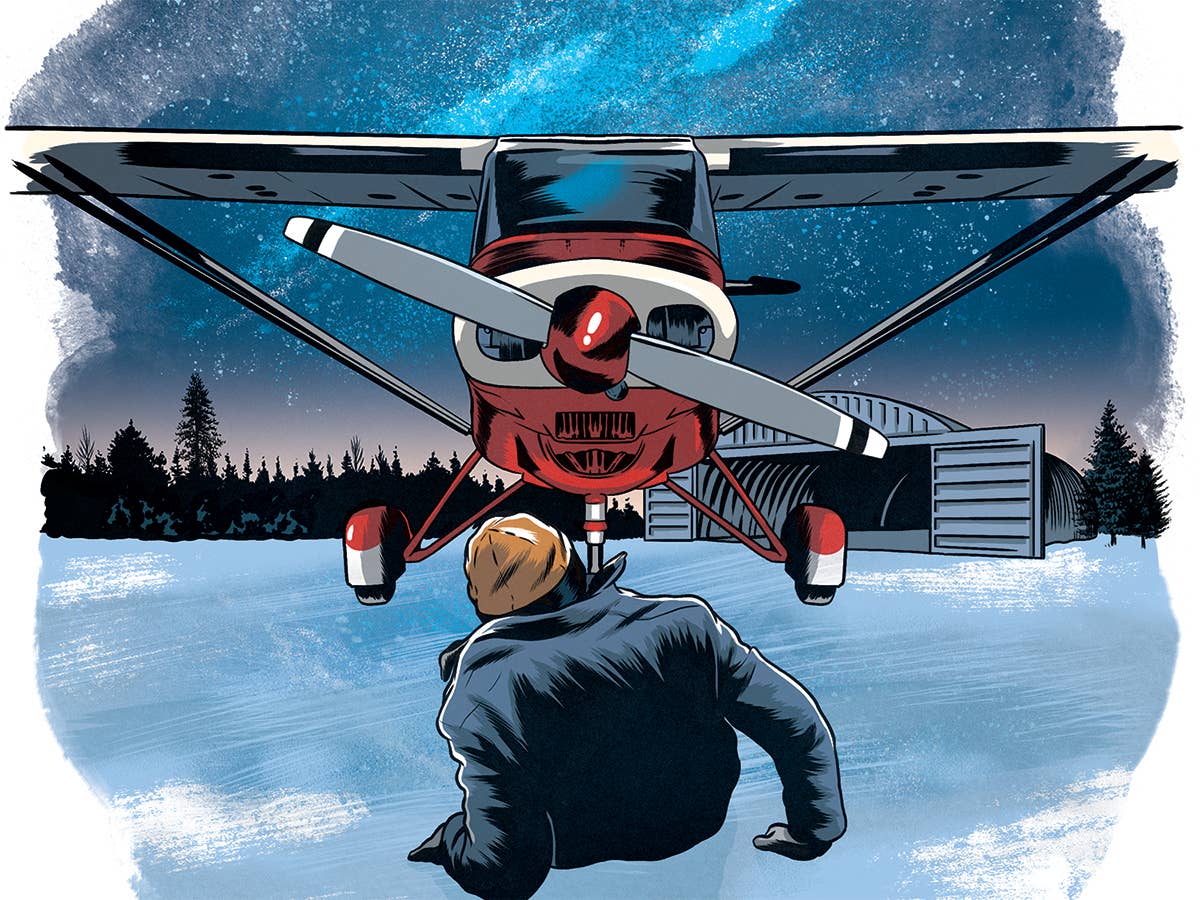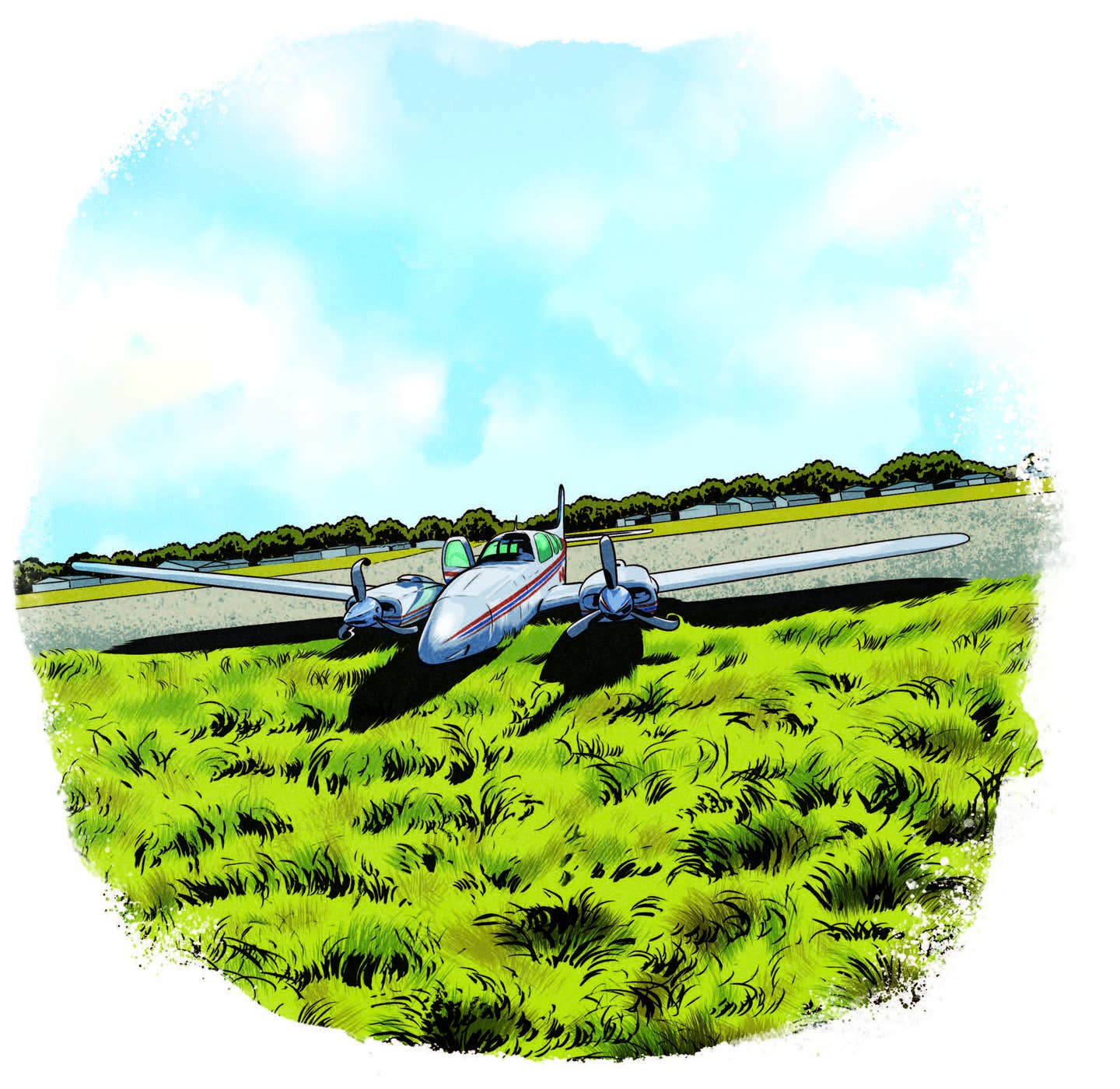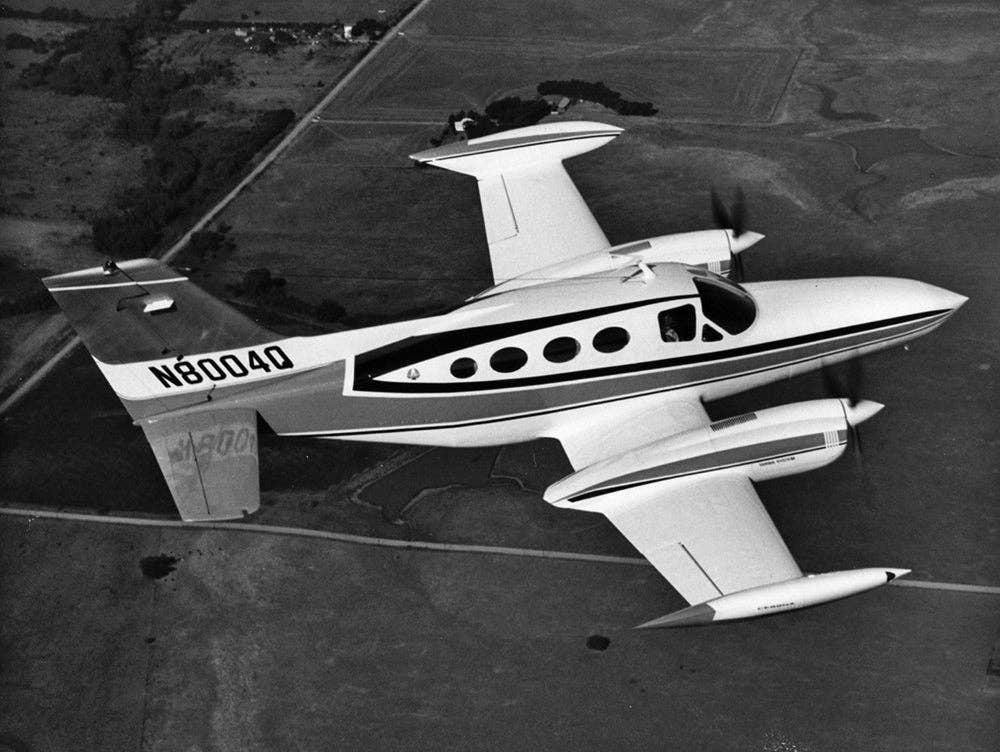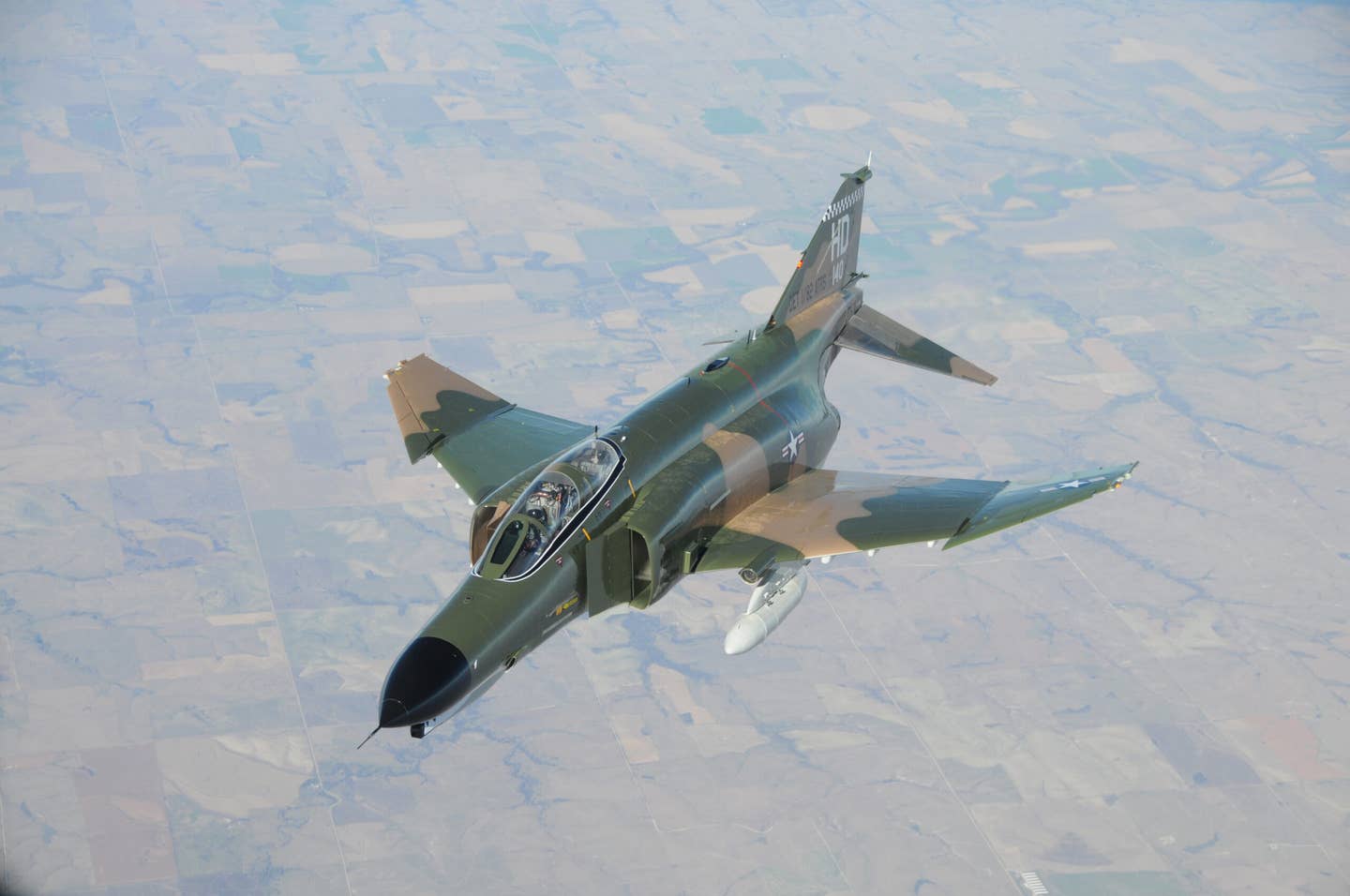In Winter, It’s Not the ‘Flying’ Part That Gets to You
Snow and ice present particular challenges for pilots, especially when getting from the hangar to the taxiway.

[Illustration by Joel Kimmel]
We're not going to talk about “winter flying.”
This is about flying in winter—when you are on a scheduled commute. It’s about adding extra time towarm up the airplane and clear the ice and snow from in front of the hangar. And, it’s about all the things that can go wrong when you are trying to warm up the air-plane and clear ice and snow from in front of the hangar.
During my first years of flying from Maine to Massachusetts, I didn’t have a hangar, so I didn’t have to clear the ice and snow from in front of it. Instead, my airplane, a 160 hp Piper Tri-Pacer, The Rocket, was parked on the ramp at Central Maine Regional Airport (KOWK) at Norridgewock. I had hired a local seam-stress, an expert furniture upholsterer, to make wing and fuselage covers for the airplane.
These covers were a complex thing of beauty. The hard part was getting the main fuselage cover up and over the twin antennas on top of the cockpit. Once those antennas found their way through the proper holes—cut especially for them—everything else would fall into place.
“I got the airplane moving a bit and was looking up to take in the inspiring display in the heavens.”
After mastering the shortcuts of covering your air-plane, you then have to learn to do it in a strong wind at night, and/or sliding around on ice. More than once on icy, windy nights, I spent more time covering the airplane than I did flying home from Massachusetts.
Just because The Rocket was on the ramp did not mean I did not have to clear ice and snow. My winter air-port is owned by the town of Norridgewock. The town brain trust evidently takes a legal view, rather than a common-sense one, of snow removal: If plow trucks get too close to the airplanes, they might damage them, resulting in costs to the town. Therefore, plow trucks stay far away from the airplanes for which they are ostensibly plowing snow. This results in anywhere from 3 feet to 5 yards of snow in front of each airplane.
After a mere 6-inch snowstorm, this “front yard” of snow becomes a pleasant form of moderate exercise—away to get one’s muscles limbered up before flying. After a 30-inch snowstorm, usually followed by blowing wind and drifts reaching almost twice that high, this “exercise” becomes an hours-long beatdown.
“Editor’s Note: Adapted from Remove After Flight”
During this particular snowstorm, I tried hard to cajole the plow truck driver to get as close to my airplaneas possible. A man of Norridgewock integrity, he wasn’t cajolable.
“Shame on you—are you from New York?” said the look on his face.
“No, I’m from ‘Exhausted’ and fed up with this symbolic snow plowing,” said the look on my face. He wouldn’t budge.
On the way into the airport, I had noticed his car. It had a large R/C airplane sitting in the back seat. “This guy loves airplanes,” I thought. I asked him if he’d like to go for a short flight.
“I’d love to go for a short flight,” he said. “I’ve got some time. I’ll take you up for a few minutesbefore I fly to Massachusetts,” I replied. “Maybe some other day,” he said. “By the time you get all that snow dug out in the front of the plane, you probably won’t have all that much time. Besides, I’ve got a lot of plowing to do.” And he did, just not in front of my airplane.
The Gift That Keeps on Giving
Maine winters can push you pretty hard, but this push comes with a gift: It makes you pay attention to nature. And when you do, you become more aware of the dramatic natural beauty that’s all around. This struck me particularly on one cloudless night. I was standing on the ice in front of my rented hangar. The sky was a blanket of stars with the arc of the Milky Way easily visible, running in a gray line north to south.
I pulled The Rocket out of the hangar by scattering some sand on the ice in front of the nose wheel to give my feet a bit of purchase. I had tried using slip-on cleats before, but when you’re tugging on a 2,000 pound airplane, the cleats tend to roll off your shoes.
I got the airplane moving a bit and was looking up to take in the inspiring display in the heavens. The mo mentum of the airplane was pushing me, gliding me slowly across the ice. Just then, my heels hit a ridge in the ice and I fell backwards in front of the nose wheel— one leg on either side of it—with the Tri-Pacer gathering speed as it cleared the hangar on a gentle downslope toward the taxiway.
This was not a good position to be in. It seems obvious that the immediate remedy would be to squirm backwards faster than the nose wheel is closing in on your personal property. It became clear, however, thatyou can’t squirm backwards as quickly as you would like, when your fanny is on glare ice. Out of prudence, I raised one leg and kicked hard at the turning nosewheel, regretting that I had removed the wheel fairings for winter flying.
The danger of kicking a turning nose wheel with an airplane bearing down on you—while lying flat on your back—is having your foot thrust under the wheel. Fortunately, the hard kick propelled me across the dark ice and gave me enough room and time to swim and slide out of the way of both the nose wheel and the main gear. Lesson learned. Now when I move The Rocket around on ice, I bring along more sand—a lot more sand—and apply what the British call “utter caution.”
By February or so, the snow outside the hangar—having been cleared more times than I can remember—had combined with the snow that had fallen off the hangar roof to become a foot-high ridge of solid ice. The path in front of the hangar was now reduced to three wheel ruts painfully sculpted with a pick and ice scraper. In fact, the phrase “clearing ice” is a bit comical. No one actually clears ice. You chop away at it until you are ready to collapse, and then you live with what’s left.
By early March, even the wheel ruts seem too deep to navigate. The ice mound in front of the hangar has been shaved down just a tad, allowing me to start the airplane in the hangar and drive it at near full-throttle up and over the ice and out into the clear, sacred space where the airport plow truck has done its symbolic work.
Getting the airplane back into the hangar, usually at night, means somehow getting it up and over that ice dam. This can’t be done with the muscles of one human being. I pondered taxiing the airplane face-first into the hangar, but that would just set up the problem of get-ting it out the following week. The solution: I bought a manually operated winch and installed it in the back of the hangar. The Tri-Pacer has a great sturdy hook under its tail, making it easy to winch it in backwards. But the process takes the better part of an evening in summer and most of a night in winter.
Survival Kit Basics
I have always carried a survival kit in the Tri-Pacer; it seems like an optimistic thing to do. It consists of a narrow-cut mountain backpack and a separate nylon bag with a pop-up, two-person tent, a tarp, and one of those squashable sleeping bags that folds to the size of a football. In the pack are a change of clothes; some thin, wool underwear; a couple pairs of Smartsocks, which combine wool and synthetic fibers; a wool “watch cap”; a good hank of nylon rope; three small, sealed tins of tea; and three or four of those old-fashioned, liquid-filled cigarette lighters.
Living in Maine, I used to keep one of those liquid lighters squirreled away in every jacket I owned. TSA agents gradually confiscated most of them as I tried to board commercial flights.
Probably the most important item in the survival backpack is my huge Gurkha knife, or kukri. It looks like a big Bowie knife with a down-curving, 30-degreeangle in the middle of the blade. Also, I’ve always kept a first-aid kit and a quilted, three-quarter-length coat—good for sub-zero weather—tucked away on the shelf be-hind the back seat.
Of all the hazards of flying in winter, the hardest one to detect is baggage creep. It occurs over a period of several winters; and then, one sunny February morning, you realize you’ve been lugging 75 pounds of stuff with you in the back of the airplane. In addition to the tent, sleeping bag, and survival backpack, you now have onboard a big plastic bin full of tools, hydraulic fluid, duct tape, extra inspection port covers, a nylon bag full of heavy tie-down stakes and rope, plus wing, windscreen, tail and cowling covers, and a 10-pound jumper cable with a special fitting on it for starting a Piper.
At some point, you have to inventory all this stuff and decide what you really need because it’s getting out of hand. Come some blistering hot summer day, all of this survival gear and these extra tools are going to prevent you from clearing the trees at the end of the runway. Of course, if that does happen, you’ll have everything you need to survive.
Editor's Note: This article originally appeared in the Q1 2022 edition of FLYING Magazine.

Sign-up for newsletters & special offers!
Get the latest FLYING stories & special offers delivered directly to your inbox






